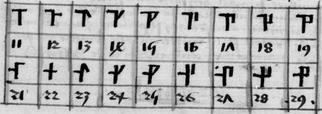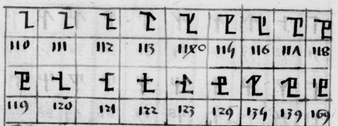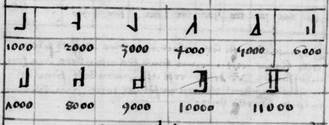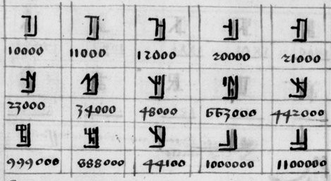In a XVth century french manuscript on arithmetic and astrology, there is a description of a numeral system as follows (it starts here in the manuscript).
Numbers between 1 and 9 are depicted by a vertical bar and a set of small bars on the upper-right (the conversion to arabic numerals is obviously using a slightly earlier version than current-day digits, but this is nothing difficult and not the topic of the question):
and then the mirror sign on the left is used for 10 to 90:
so that numbers 11 to 29 read:
Then larger numbers are represented with more bars, for instance with:
one can then write:
and with:
one can write:
Finally, very large numbers can be written by embedding symbols:
I would like to know the name (if any) of this numeral system, who first came up with it (if this is known), and relevant references about it.







